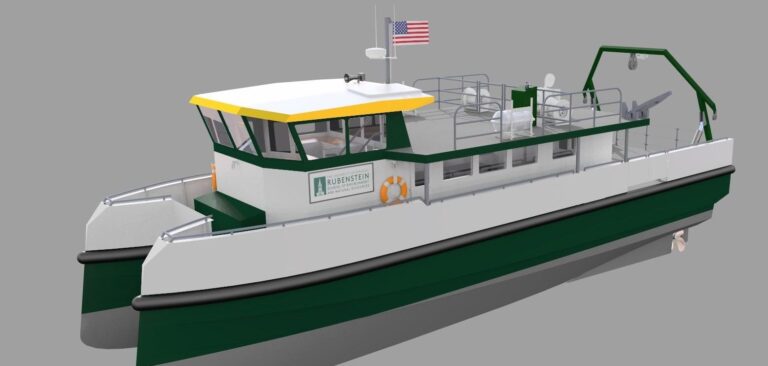UK-based Chartwell Marine has been selected by The University of Vermont (UVM) in the USA to design a 19m-long hybrid research vessel.
The catamaran is to be developed in collaboration with BAE Systems, and Chartwell says that it will be capable of low-emission, low-fuel-burn operations when launched in April 2022. The vessel will be built by Derecktor Shipyards, in Mamaroneck, New York.
The hybrid system is centered around two Cummins QSB 6.7m, 306hp diesel engines and a pair of BAE-produced AC traction motors and a yet to be detailed energy storage system. Chartwell claims the system should enable all-electric operation for trips less than two hours in duration, which represents 60% of all current UVM voyages. Beyond the emissions benefits, UVM notes that electric operation will aid it in achieving its research goals, notably through reducing vibrations on board while also reducing noise, an important factor when studying marine life.
The efficiency of the vessel will be further enhanced by a suite of survey equipment provided by specialist InterOcean Systems, in partnership with the Woods Hole Oceanographic Institute. Together IOS and WHOI have developed a new direct-drive winch system for use with towed research devices and USVs.
UVM says it envisions three main uses for the vessel: a mobile ‘classroom’ for undergraduate field trips; a platform for graduate students researching the Lake Champlain environment; and a way for engineering students to study the future of hybrid vessel design.
“The future of vessel procurement will look quite different to its current form today, as operators worldwide begin to respond to increasingly stringent requirements for low-emission craft,” noted Andy Page, naval architect and managing director at Chartwell Marine. “The USA in particular is taking a lead in the adoption of marine emissions regulations, and, with emerging industries such as offshore wind changing the landscape of maritime activity off the East Coast, it’s great to see a regional institution like The University of Vermont take the initiative with the adoption of hybrid technology. There are certainly lessons to be learned from this project that will be highly beneficial in the development of hybrid vessels for the offshore wind market in the USA and further afield.”



